The Sacro Monte of Varese (literally ‘Sacred Mount of Varese’) is one of the nine sacri monti in the Italian regions of Lombardy and Piedmont which were inscribed on the UNESCO list of World Heritage Sites in 2003. It is a complex and articulated environment, and the photographic documentation of it, taken by Vivi Papi from the late 1940s, is copious.
Here is a summary of the images in the archive, divided by period. More complete details are available on request.
1948Vivi Papi took his first picture in 1948, "via del ceppo: portrait of parents with dog" (24x36 mm black-and-white film).
1950s
Many images on this period are focused on the natural and social environment: views, panoramas, portraits to the visitors and inhabitants of the hamlet during their work or free-time activities (peasants, bus drivers, skiers, ...), views of piazzale Pogliaghi in the course of or shortly after the arrangement works, some studies of the hamlet and the crypt of the sanctuary.
1958
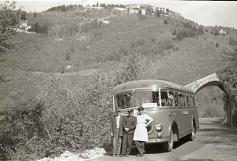
In 1958 Vivi Papi photo documented the 1st mountaineering course of the CAI (Italian Alpine Club) of Varese, the exercises on the rock practice wall at Campo dei Fiori, some lectures at the headquarters, an excursion, some portraits in the moments of rest, the souvenir photo at the end of the year.
In October, he first documented the crypt of the sanctuary. The material is almost all on 24x36 mm black-and-white film. There are also some glass plates dated 1952.
1960-1978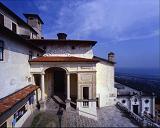
During this period, images are made occasionally, partly on the photographer's own initiative, partly on behalf of art magazines or for studies in preparation for restorations.
1965: accurate study, on photographer's initiative, of the interior of the crypt, its architectural structure and frescoes even with small details (black-and-white and color film in different formats, ranging from 24x36 mm to 10x12 cm.);
late 1960s-early 1970s: collaboration with the Astronomical Observatory "G. Schiaparelli" to document observations and laboratory work in the woods, lectures by prof. Salvatore Furia, meetings with visitors outside and inside the Observatory (color and white/black film in formats from 24x36 mm to 10x12 cm);
1970s: collaboration in documenting the work of arch. Bruno Ravasi regarding Sacro Monte and its chapels, with a focus on architecture; numerous drawings and studies (of chapels, arches and fountains) were also photographed (white\black and color film in formats from 24x36 mm to 13x18 cm).
There are also views of the village and the environment around it, a few portraits, a few (rare) events, other images in collaboration with CAI Varese, several photos of interiors and details of the architecture of the sanctuary and of its surroundings, in different formats.
1980-1981
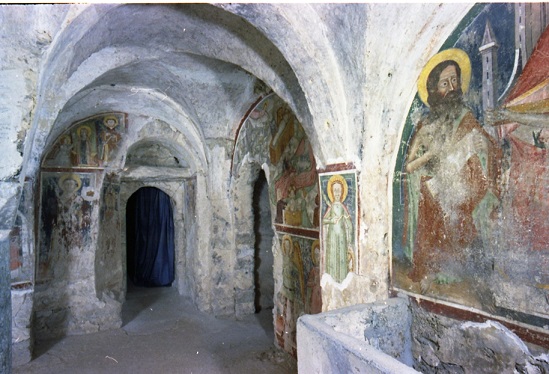
1979: Vivi Papi was given a commission by the Rotary Club of Varese to carry out a campaign to document the interiors of the chapels: especially the statues but also the overall interiors, exteriors and frescoes. The images were taken during 1980 and 1981, and when the work was completed, 18x24 cm white prints and 24x36 mm color slides were delivered to the client. Extra shots that were taken (both copies of what was delivered and shots for internal use) remained the property of the photographer (a total of 46 sheets of negatives and about 1900 24x3 mm color slides), which are now in the archives.
1982-2004
The images taken during this period are numerous (formats from 24x36 mm to 13x18 cm, on both positive and negative, white\black and color film).
Events
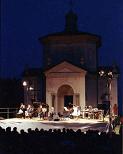
They are regularly documented, beginning in 1981, when a Romita (cloistered nun) pronounced her vows in public in the presence of Bishop Macchi and Cardinal Martini (24x36 mm color or black/white negative film and partially with 24x36 mm color slide).
Among the most important ones:
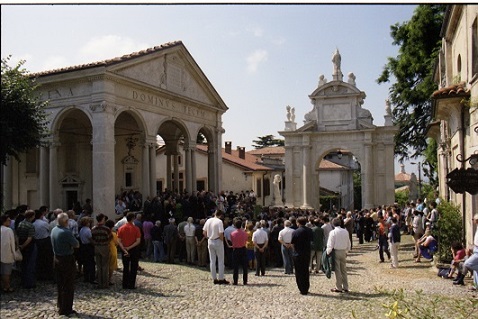
the inaugurations of all the restored religious buildings: from the Tenth Chapel on March 25, 1985, to the Church of the Immaculate Conception (locality Prima Cappella) on December 8, 1993 (with the exclusion of the Third Chapel, inaugurated on March 25, 1983), Renato Guttuso's mural and Floriano Bodini's statue of Pope Paul VI in the piazzale del Santuario;
the pilgrimage of H.H. John Paul II on November 2, 1984, beginning with his arrival in the village and including a visit to the monastery of the Romite Ambrosiane.
Numerous other events: from the smallest ones, such as the little parties at the Nursery School, to the processions, from the entertainments organized along the Alley of the Chapels, on the piazzale del Santuario or at the Fourteenth Chapel, also with the intervention of important artists, to the events related to the 2000 Jubilee.
The laying of the funicular wagons and its inauguration.
Almost all those pictures were taken on the personal initiative of Vivi Papi, who was later joined by his wife Anna Maria Fumagalli.
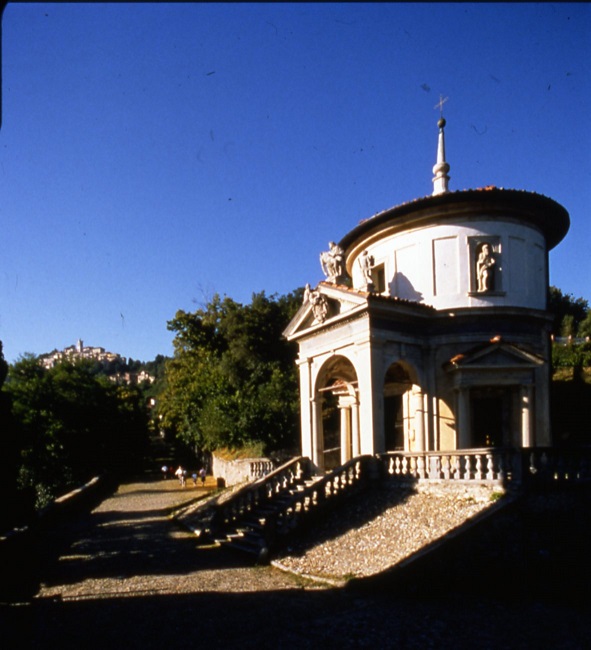
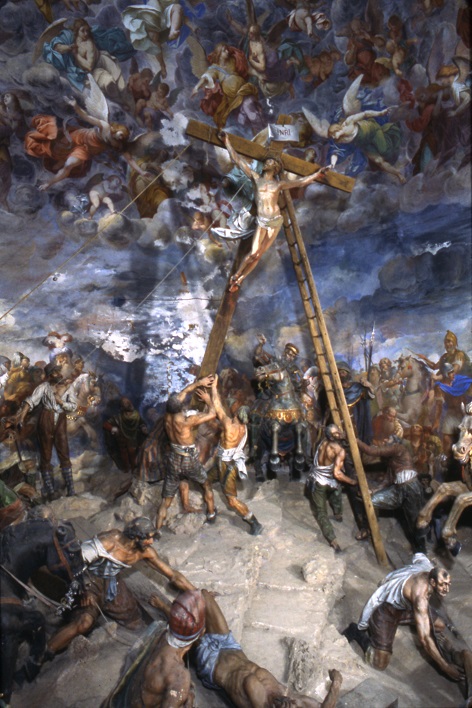
The exteriors and interiors of the chapels were photographed in the years following the restorations; for each chapel there are overall views of the exterior, setting in the walkway, details of the exterior statues, overall images of the interior, groups of statues, some individual statues, and the main frescoes.
The following were photographed in detail:
Guttuso’s mural (on several occasions, between 1983 and 1999) and with different formats (negatives, 24x36 mm and 6x7 mm, and slides, 24x36 mm and 20x25 cm, in color);
the Tenth Chapel (in 1987) and the Fourteenth Chapel (in 1990). The archive even preserves images of the graffiti on Tangentopoli that appeared in 1994 at the Second, Third and Fifth Chapels;
the Sanctuary (exterior, interior and crypt) was photographed in almost complete detail between 1999 and 2003.
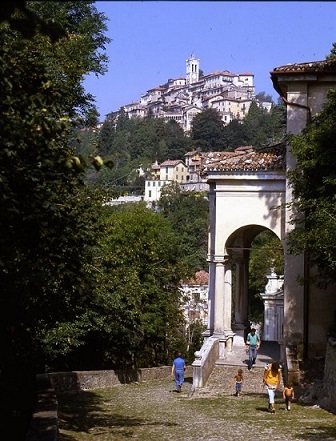
Views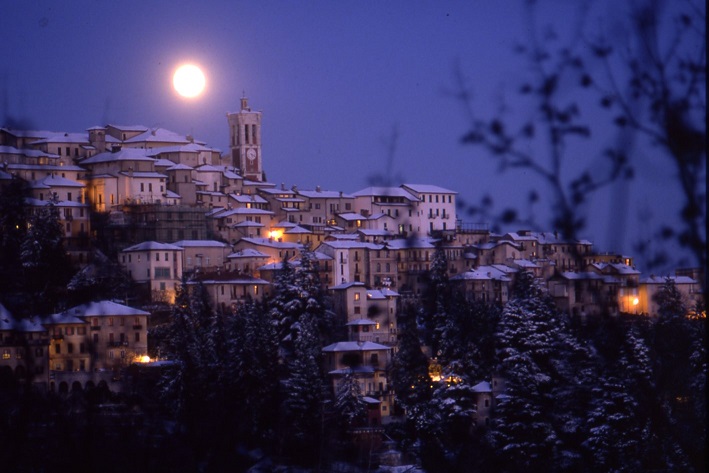 Over the years, Vivi and Anna Maria Papi have taken numerous environmental photos of the village, of the "Marmitte dei giganti” (Potholes of the giants) along the course of the Vellone stream, of the remains of buildings on Mount San Francesco and in the woods of Velate, of snowfalls, night and daytime panoramas, views with fog, sunrises, and sunsets. Views on and from the hamlet, and from a variety of viewpoints.
Over the years, Vivi and Anna Maria Papi have taken numerous environmental photos of the village, of the "Marmitte dei giganti” (Potholes of the giants) along the course of the Vellone stream, of the remains of buildings on Mount San Francesco and in the woods of Velate, of snowfalls, night and daytime panoramas, views with fog, sunrises, and sunsets. Views on and from the hamlet, and from a variety of viewpoints.
Systematic campaigns
In the years 1991-1992, at the suggestion of and in collaboration with the restorer prof. Carlo Alberto Lotti, two systematic campaigns were carried out:
one to document the evolution of the village architecture with even minute details;
The other one on the works by Edoardo Caravati, nicknamed Stravaccamadonne, a peculiar character who lived between 1866 and 1930 in an old farmhouse at Piano delle Croci, a professional stonecutter. For long occupied in the construction sites of the Campo dei Fiori area and the funicular railway, he loved to carve the stones he found, by giving them sacred shapes and leaving them on the spot; his works can be found scattered all over the mountain, especially in the woods around the Tre Croci (Three Crosses) and of the area of the Grande Albergo and in some characteristic corners of the village.
The images of these campaigns are mainly in color slides or color 24x36 mm negative format; in some cases in larger formats. Some of them, especially those related to Caravati and the village, were used for the magazine edited by Carlo Alberto Lotti "Madonna del Monte" (Our Lady of the Mount, mainly n. 4, year 2, July-August 1991) and partly for study. Most, however, have never been used.
From 2000 to 2003, following a personal vision of the village, Vivi Papi also took a series of images using special filters (24x36 mm color slides). Some of these were used for a solo exhibition of the author by the Varese High School of Art in 2003.
Documents, objects, books and paintings
In collaboration with and at the direction of C.A. Lotti or at the request of various patrons, publishers, and scholars, over the years but especially in the 1990s Vivi Papi photographed numerous documents related to the life of the shrine and the village, found in various archives, museums, or owned by private persons: souvenir items, books, vintage postcards, paintings, etc.. Part of these images was used for the above-mentioned magazine "Madonna del Monte".


